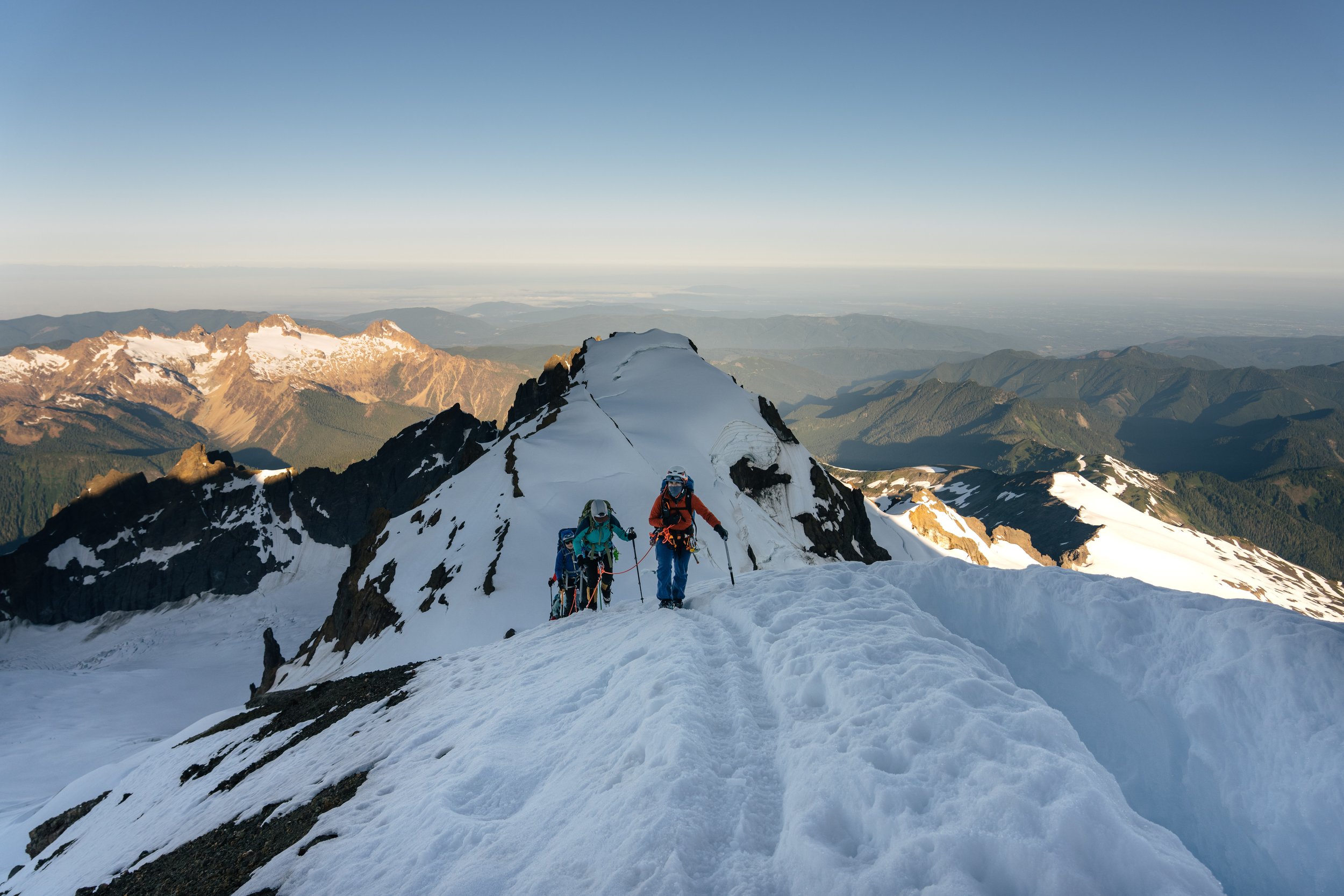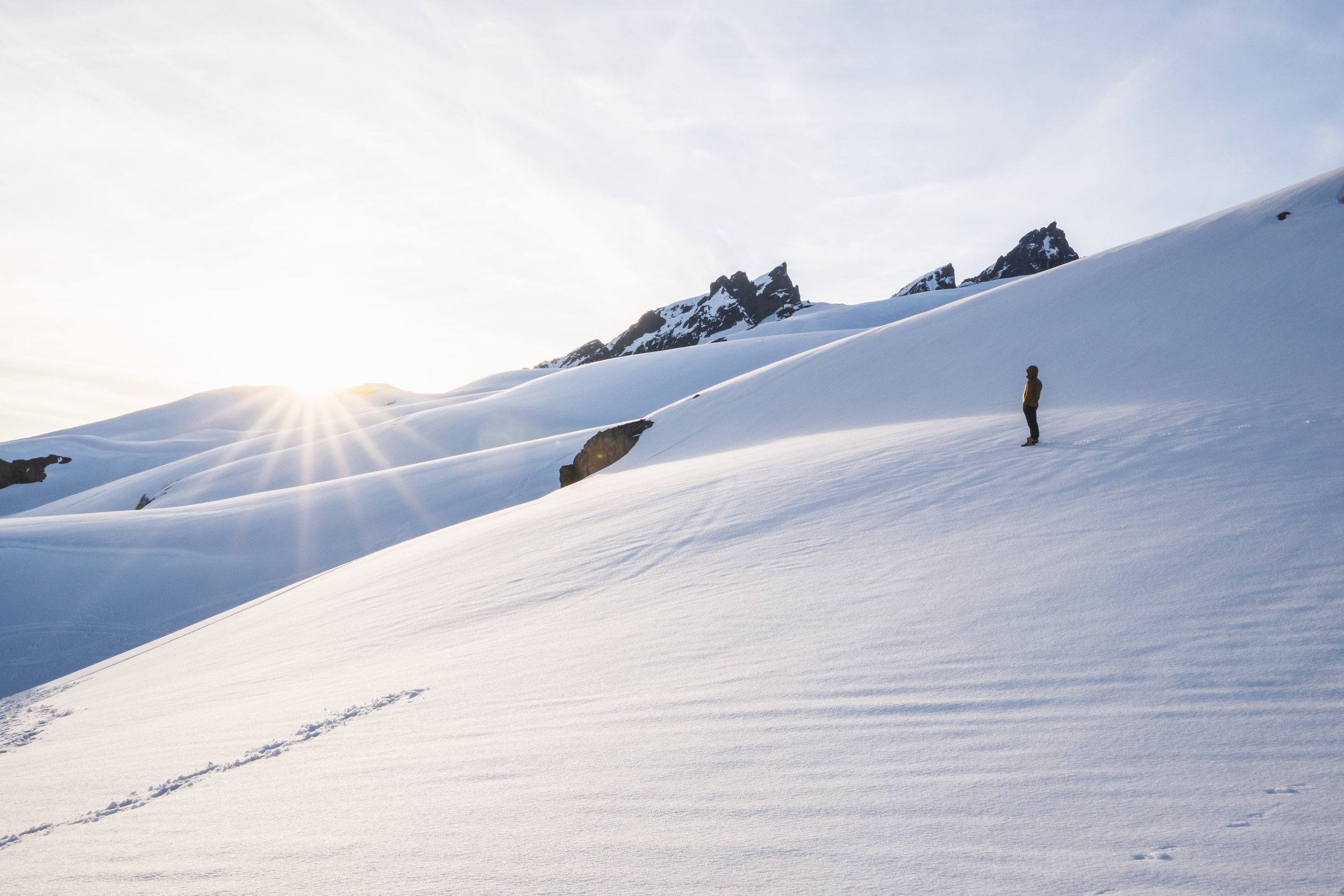
Women’s Ecuador Volcanoes

Come experience the beauty of Ecuador alongside an empowering and supportive group of women.
Price: $4,495
2025 Dates: November 5 - 15 (CLOSED)
2026 Dates: November 5 - 15 (OPEN)
Difficulty: Moderate
How to sign up:
Please email us at upwardtransitions@yahoo.com and we will assist you in making a reservation.
-
This expedition ascends both Cotopaxi (18,996 feet) and Cayambe (19,347 feet). It is certainly one of the best “bang for your buck” climbing programs in the world!
This is your opportunity to join an incredible group of women who will cheer you on and empower you along the way.
Ecuador is an amazing country, full of rich culture and beautiful high altitude mountains.
This expedition will begin and end in Quito (9,350 feet), located in the foothills of the Andes Mountains in central Ecuador. Once you arrive, acclimatization becomes your first objective before moving south to the picturesque Cotopaxi, one of the world’s highest volcanoes and Ecuador’s second-highest summit. Since 1738, Cotopaxi has erupted more than 50 times, most recently in 2022, resulting in the creation of numerous valleys formed by lahars (mudflows) around the volcano.You can also add on Chimborazo (20,548 feet), which is Ecuador’s tallest peak and the furthest point from the center of the Earth.
Then, in a gradual altitude progression, you head north to Cayambe, which is Ecuador’s third-highest mountain, about 70 kilometers northeast of Quito. Cayambe is the only major mountain in the world whose summit straddles the Equator. Indeed, it is the only snow-capped mountain situated directly on the Equator. Following our climb of Cayambe, you unwind and recover at the Termas de Papallacta hot springs before returning to Quito.
For those adding on Chimborazo, you will head south for a chance to summit Ecuador’s tallest peak. This inactive stratovolcano is not only a fantastic climb, but it’s also the farthest point from the center of the Earth, given its position on the planet’s equatorial bulge (whereas Mount Everest is the highest point above sea level). We highly recommend climbing Chimborazo, as it’s a great way to make the most of your acclimatization, training, investment and time in Ecuador.
-
This itinerary is only a rough estimate and will be determined by weather and acclimatization. This is adventure travel, meaning things rarely go as planned, and this schedule will likely change.
Day 1: Arrive in Quito, Ecuador
Day 2: Gear checks, Equator visit, Teleférico de Quito (cable car)
Day 3: Acclimatization hike on Rumiñahui Central (15,203 feet)
Day 4: Travel to Cotopaxi for training
Day 5: Hike to the Refugio José Rivas on Cotopaxi
Day 6: Summit Cotopaxi (18,996 feet) and descent to Hacienda La Ciénega
Day 7: Drive to the Refugio Ruales Oleas Bergé on Cayambe
Day 8: Acclimatization day or possible summit day
Day 9: Summit Cayambe (19,347 feet) and drive to Termas de Papallacta
Day 10: Drive to Quito and enjoy a celebration dinner
Day 11: Departure day for those not climbing Chimborazo
-
· Professional mountain guides
Team hotels and mountain huts at double occupancy (excluding early arrivals or late departures)
Breakfast is provided daily, and expedition food is available in the huts. While on the mountain, dinners and breakfasts will be provided. Lunch is mountaineering style, which means you will eat a steady graze throughout the day to keep your energy levels high.
Guidance and expedition management
All group transportation is provided while on the expedition. If you depart early, you are responsible for the added expenses for transport, lodging, rescue, and evacuation.
Team gear, including fuel, ropes, safety gear, and tents for Chimborazo
Satellite phone to update the CTSS blog.
-
Pack in three iconic high-altitude summits, Cotopaxi, Cayambe, and Chimborazo in just two weeks with our most talented mountain guides.
Stay in luxurious haciendas (think 400-year-old estates), boutique hotels, and well-appointed mountain huts. Not a tent in sight.
Experience the rich culture and amazing hospitality of one of the world’s best travel destinations—Ecuador.
Relax post-climb in Termas de Papallacta‘s natural hot springs.
-
This program is of moderate difficulty and is great for those with previous experience with crampons, ice axes, and rope travel on peaks such as Mount Baker and Mont Blanc. It requires solid fitness and an ability to perform well at altitude, but it is not beyond the abilities of many people who are willing to train for the climb and work hard on the trip.
Your climb begins long before you reach Ecuador. We encourage you to incorporate training into your daily routine at least six months before the departure date. As your climb rolls around, you want to be in top physical and mental condition. Being fit at home is different from being strong at high altitudes and in extreme conditions.
By the time you depart, you should be comfortably able to do multi-day hikes with strong elevation gain carrying a 40-lb pack. While you won’t necessarily always have a pack that heavy in Ecuador (you will be carrying all of your gear to the Cayambe and Cotopaxi huts and, if you do the Chimborazo add-on, to high camp), it is a great way to build your power and strength in the areas you will need it. The average pack weight in Ecuador is 20 lbs (10kg) on a hiking/climbing day and 30 lbs (15 kg) on a day we are carrying to/from a hut or high camp.



